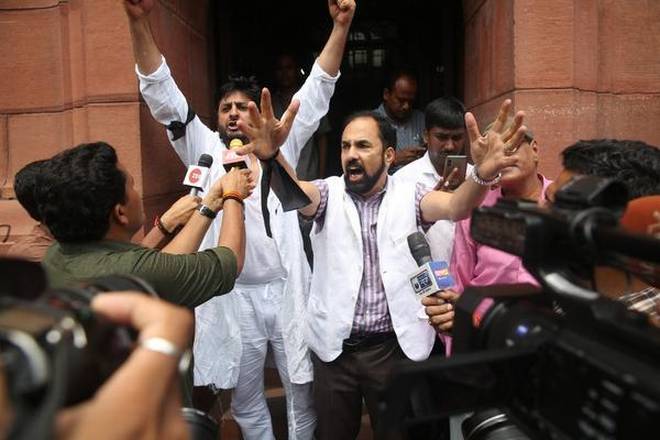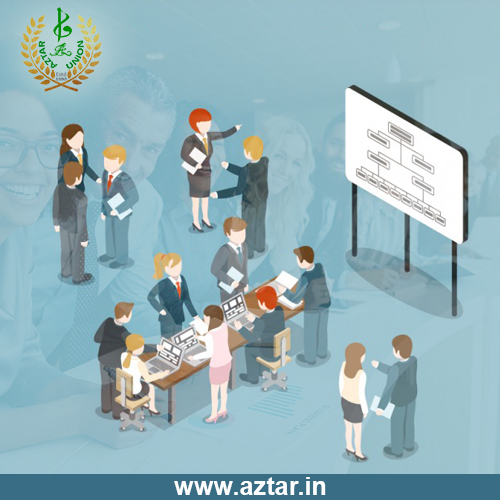
The map of J&K had changed, the residents of the affected State would come to know much later
At 11.45 p.m. on August 4, 2019, this correspondent received an SMS from a friend in Srinagar. Unusual, as we usually chatted on WhatsApp. Internet was blocked in Kashmir. The reply to the SMS failed to deliver. The next morning — August 5 — a call to her did not go through. It was meant to be like this in the Kashmir Valley for days to come.
Parliament Live, August 5, 2019 | Rajya Sabha passes the J&K Reorganisation Bill, 2019
The only mobile number active in the Valley that day and for the following days was that of Director-General of Police Dilbag Singh and a bunch of other police officers. They were to be Delhi’s window to Kashmir in absence of any mode of communication.
In July, the monsoon session of the Parliament had been extended by two weeks to transact “essential government business”.
The Monday, from journalists and WhatsApp conspiracy theorists, everyone had an inkling that an important legislation related to Kashmir was to be tabled in Rajya Sabha, the House of elders, at 11 a.m. No one knew the specifics.
Parliament Live, August 6, 2019 | Lok Sabha passes J&K Reorganisation Bill; Ayes: 370, Noes 70
The press gallery in Rajya Sabha that generally remains thinly occupied was teeming with journalists, with many perched on the steps as there are limited seats.
Meanwhile in J&K, the residents had been locked in their homes, a reality that we would come to know days later. Rings of concertinas were laid outside houses. Even the local cable television lines were snapped. There was no way for the constituents, directly impacted by the legislations, to know an important decision that was to be taken by the Elders, thousand miles away in Delhi.
Before Home Minister Amit Shah entered the Parliament, he was clicked at the steps.
In folded hands, he clasped a transparent plastic folder that would give a glimpse of events that were to unfold that day. One of the items on the agenda included “possibility of violent disobedience in sections of uniformed personnel”.
Diary of a Kashmir correspondent | When Jammu and Kashmir’s geography became history
Shortly after, he introduced the legislations to read down Article 370 in J&K, revoking the special status that the State enjoyed under the Constitution of India. Another first was that the State was downgraded and bifurcated into two Union Territories — J&K and Ladakh, the latter without a Legislative Assembly.
The map of J&K had changed, the residents of the affected State would come to know much later.
After two resolutions and two Bills to effect the changes were moved in the Rajya Sabha, a little past 11 a.m., initially there was a confused silence from the Opposition benches that swiftly graduated to vociferous protests. It ultimately dissipated as the day passed.
Explained | President’s Order scraps its predecessor and amends Article 370
The copy of only one unrelated Bill — the J&K Reservation Bill, 2019 — was distributed among the members as Mr. Shah spoke about the resolution and the legislation to read down Article 370.
There was no mention of it in the list of business agreed to by Opposition leaders and the government in the chamber of the Rajya Sabha Chairman that morning.
Later, Chairman M. Venkaiah Naidu informed the House that he had used his discretionary powers to waive the requirement of an advance notice as the issue was of urgent national importance.
By this time all phone lines — fixed line and mobiles — in J&K had been rendered inactive. All political leaders were either detained or arrested.
Also read | From the archives — The Hindu’s report on the President’s Order in J&K, 1954
Mr. Naidu had announced there were would be no lunch break and the members would get an hour to read the Bills and submit the amendments.
On hearing this, the members trooped in the well, the marshals formed an additional protective ring around the Chairman. The live coverage of Rajya Sabha TV was snapped as pandemonium continued, something I discovered after an hour since phones are not allowed inside.
What lay invisible from public eyes was witnessed by some of us.
In the past, the House of elders had witnessed protests but not to this scale.
Also read | A year on, several Jammu and Kashmir leaders remain confined
Two Peoples Democratic Party (PDP) members from the Kashmir Valley, rushed to the well. One of them, Mir Mohammad Fayaz, almost collapsed, shouting. His face was red with anger, kurta was shorn as he waved and cried in desperation. The other colleague, Nawaz Ahmad Laway, also jumped in exasperation with a copy of the Constitution. In few seconds, pages were torn and flung in the air.
Rajya Sabha’s well turned into a medieval battlefield. Members of the Bharatiya Janta Party (BJP) stormed into the well and a physical altercation took place.
Mr. Naidu immediately ordered the marshals to throw the duo outside the House.
Comment | The Centre’s Kashmir policy and a heavy price to pay
The Congress MPs, unsure of what hit them, squatted in the well led by Ghulam Nabi Azad, a former Chief Minister of J&K.
The Trinamool Congress joined them. The four steps leading to the Chairman’s podium were blocked by protesting members.
There were slogans and hooting.
Despite the ruckus and protests by the members, the House was not adjourned even for a minute. The business continued as usual. By 3 p.m., the members squatting in the well had gone back to their seats.
Prime Minister Narendra Modi entered the house in the last leg of the eight-hour discussion.
Also read | Jammu & Kashmir to highlight achievements of 12 months
He sat through the concluding speech made by Mr. Shah, occasionally thumping desks and nodding his head.
The Bills were put to voting — 125 in favour, 61 against.
The Trinamool had abstained.
The House was adjourned at 6.40 p.m.
BJP MPs chanted Bharat mata ki jai . PM Modi reached out to Opposition benches, handshakes and namaste followed. The AIADMK MPs particularly huddled around the PM to thank him.





















